
Zoroastrianism (Good Conscience) was the first Universal and Monotheist Religion in History and the root of much of Jewish, Christian and Islamic doctrine and belief. Zoroastrianism is the oldest of the revealed world-religions, and it has probably had more influence on mankind, directly and indirectly, than any other single faith. Over the millennia, the words and compositions of its founder “Asho Zarathushtra” were almost lost due to passage of time and accidents of history, as libraries and books were burned again and again by invaders (Greeks, Arabs, Mongols, Ottomans etc.) and its wise men were either killed, enslaved, deported or went into hiding and the Persians were brutally forced to change their religion and customs by the edge of the Arab Sword. However, thanks to the Zoroastrian descendants of the Persians who escaped the brutal Islamic invasion and settled in India and the long, arduous and painstaking work of literally thousands of international scholars in the last decades, the original message of Zoroastrianism has surfaced once again, revealing it as ever-relevant, unique and inspiring. While Zoroastrianism once was the most powerful religion in the world for over a millenia and the official religion of the Persian Empire, the number of adherents has today dwindled to not more than a million Zoroastrians worldwide. It is important to note that Zoroastrianism is not an oriental mystic sect or cult, but a Universal World Religion for all Mankind and the greatest outpouring of love the human race has ever seen.
![]() Introduction: This web page is dedicated to the divine message revealed by “Asho Zarathushtra” who was known to the ancient World as Zoroaster. On vernal equinox of the 1737 B.C Zarathushtra gave to the world pure Monotheism and preached that there is only One God whom he referred to as the “Lord of Wisdom” and the guardian of the cosmic order. Zoroastrianism introduced the concepts of: monotheism, duality of Good and Evil, mankind's free choice between the two alternatives, messianic redemption, resurrection, final judgement, heaven (the word “Paradise” comes from Old Persian), hell and the notion of an almighty, kind, loving and forgiving God. He believed man's salvation in life and in the afterlife could only be ensured through Good Thoughts, Good Words and Good Deeds. Many of these concepts had a profound influence on Judaism, Christianity and Islam. Persians adopted Zoroastrianism at a time when every race considered itself to be the chosen people of Gods/God, Zarathushtra did not discriminate between race, cast and creed. The Good Religion of Zoroastrianism is universal and for all the peoples of the world and it advocates preaching and propagation on sound basis of education aimed at spreading all over the earth. It is the first universal missionary religion.
Introduction: This web page is dedicated to the divine message revealed by “Asho Zarathushtra” who was known to the ancient World as Zoroaster. On vernal equinox of the 1737 B.C Zarathushtra gave to the world pure Monotheism and preached that there is only One God whom he referred to as the “Lord of Wisdom” and the guardian of the cosmic order. Zoroastrianism introduced the concepts of: monotheism, duality of Good and Evil, mankind's free choice between the two alternatives, messianic redemption, resurrection, final judgement, heaven (the word “Paradise” comes from Old Persian), hell and the notion of an almighty, kind, loving and forgiving God. He believed man's salvation in life and in the afterlife could only be ensured through Good Thoughts, Good Words and Good Deeds. Many of these concepts had a profound influence on Judaism, Christianity and Islam. Persians adopted Zoroastrianism at a time when every race considered itself to be the chosen people of Gods/God, Zarathushtra did not discriminate between race, cast and creed. The Good Religion of Zoroastrianism is universal and for all the peoples of the world and it advocates preaching and propagation on sound basis of education aimed at spreading all over the earth. It is the first universal missionary religion.
![]() The winged symbol is the Fravashi, the guardian spirit of an individual
The winged symbol is the Fravashi, the guardian spirit of an individual

![]() The light of an ancient fire reflects into our modern world. It is the light of Zoroastrianism, which began in Persia nearly four millennia ago (3747 years ago). The founder of that religion was a prophet, a man chosen by God to speak the truth and bring wisdom and justice to a barbaric world. His name was Zarathushtra. He grew up with a love of wisdom and righteousness and as a young boy he was interested in nature and wanted to know as to how the world was created. His search for creation and the creator lead him to God with whom he communed after several years of meditation. According to the legend when he was thirty he immersed himself in water and when he emerged in a state of purity he had a vision of a shining being (angel) who introduced himself as Good Purpose. According to the legend, Good Purpose took Zarathustra up a mountain to the great God “Lord of Wisdom” (Ahura Mazda). And Zarathustra came down off the mountain with a message that he wished to preach to all humanity.
The light of an ancient fire reflects into our modern world. It is the light of Zoroastrianism, which began in Persia nearly four millennia ago (3747 years ago). The founder of that religion was a prophet, a man chosen by God to speak the truth and bring wisdom and justice to a barbaric world. His name was Zarathushtra. He grew up with a love of wisdom and righteousness and as a young boy he was interested in nature and wanted to know as to how the world was created. His search for creation and the creator lead him to God with whom he communed after several years of meditation. According to the legend when he was thirty he immersed himself in water and when he emerged in a state of purity he had a vision of a shining being (angel) who introduced himself as Good Purpose. According to the legend, Good Purpose took Zarathustra up a mountain to the great God “Lord of Wisdom” (Ahura Mazda). And Zarathustra came down off the mountain with a message that he wished to preach to all humanity.
The World Today: We have forgotten Zarathushtra's prime objectives, and we judge ourselves and others by the prestige of our jobs, the size of our bank accounts, the make of our cars, the size of our houses. In the light of all the above, we may say humanity today needs the true spirit of Zoroastrianism for revitalizing itself. There has been restlessness and violence due to loss of spiritual and ethical values. It might be said that the spiritual, philosophical ethical, rational psychological, universal and practical teachings of Zarathushtra might satisfy the spiritual yearnings of modern man and inspire him towards establishing a better world of brotherhood, humanity and love. We can sum up the message of Zarathushtra: Think creatively, constructively, rationally, originally and independently with your head; love fully, universally and joyously with your heart; and live dynamically in total goodness by using your hand to serve mankind in the cause of unity and peace. Wordsworth put it well when he said:
“The world is too much with us, Late and soon, getting and spending, We lay waste our powers. Little we see in nature that is ours, We have given our hearts away...”
Timeline: Zarathushtra built an observatory in Zabol, Sistan (eastern Iran) and it was inaugurated on 21st March 1725 B.C, the day King Vishtasp of Persia and his court converted, chose the Good Religion of Zoroastrianism and joined the Zoroastrianism Fellowship. It also provides us with the clue that the Zoroastrianism was founded by “Asho Zarathushtra” exactly twelve years earlier on vernal equinox of the 1737 B.C. Most scholars and historians today agree on a time-frame for Zarathushtra as early as 1700 B.C. Zoroaster’s birthday falls on March 26th 1767 B.C.. (6th of Farvardin in Persian Calendar) This date is more significant and special for the Zoroastrians. The Zoroastrian Calendar is based on his 40th Birthday, so right now, the year is 3747 Zoroastrian Holy Year.
![]() Zarathushtra at the court of King Vishtasp of Persia on 21st March 1725 B.C.
Zarathushtra at the court of King Vishtasp of Persia on 21st March 1725 B.C.
![]() Zarathushtra was the first world teacher who gave freedom and liberation to the then enslaved mankind from ignorance, superstition and ritualism. Zoroaster was thus the first to teach the doctrines of an individual judgment, Heaven and Hell, the future resurrection of the body, the general Last Judgment, and life everlasting for the reunited soul and body. These doctrines were to become familiar articles of faith to much of mankind, through borrowings by Judaism, Christianity and Islam; yet it is in Zoroastrianism itself that they have their fullest logical coherence... He does not demand blind following, he gave freedom of thought and freedom of choice in the matter of religion. Without moral conduct in life, no spiritual progress is ever possible. He applied religion to life. Ethical Philosophy of Zarathushtrianism is summarized in three Jewels, “Good Thought”, Good Word”, “Good Deed”. Individual Making The Difference from Within and from Outside. On the contrary he says:
Zarathushtra was the first world teacher who gave freedom and liberation to the then enslaved mankind from ignorance, superstition and ritualism. Zoroaster was thus the first to teach the doctrines of an individual judgment, Heaven and Hell, the future resurrection of the body, the general Last Judgment, and life everlasting for the reunited soul and body. These doctrines were to become familiar articles of faith to much of mankind, through borrowings by Judaism, Christianity and Islam; yet it is in Zoroastrianism itself that they have their fullest logical coherence... He does not demand blind following, he gave freedom of thought and freedom of choice in the matter of religion. Without moral conduct in life, no spiritual progress is ever possible. He applied religion to life. Ethical Philosophy of Zarathushtrianism is summarized in three Jewels, “Good Thought”, Good Word”, “Good Deed”. Individual Making The Difference from Within and from Outside. On the contrary he says:
“Give ear, listen, ponder with the light of your shining mind and decide, each man must choose his faith for himself. As you sow, so must you reap, Happiness to him who gives happiness to others.”
Equality and the Gender Balance of God: Zarathushtra seems to be the first to make one deity the only deity. By using the gender-neutral term God (Ahura+Mazda), a compound of a male and female name, Zarathushtra wished to convey both the equality of the males and females before the Creator and, also, the fact that the deity was beyond one particular sexual designation (God is, after all, beyond gender). Many scholars have translated “Ahura Mazda” as Lord of Wisdom. Ahura ![]() has been associated with existence (meaning being and life). Mazda
has been associated with existence (meaning being and life). Mazda ![]() means super-intellect and supreme wisdom. Mazda can also mean Great or Maximum Knowledge, as well as Maximum Giver. Later prophets and Abrahamic religions after Zoroastrianism described God in rather gender based masculine (male/father) terms: “The Fatherhood of God and the brotherhood of man”. The commonplace manner in which Christians address the Almighty as Father comes from Christ Himself. In fact, Jesus actually used a more intimate word, “Abba” or “Daddy”, prophet Zoroaster never did. He realized a Supreme Being, who is independent of being worshipped and obeyed and thus... “God is not about fear, guilt, torment and condemnation.” Men and women enjoy freedom as equals; “the family of humanity”. People can choose Zarathushtra as their spiritual and physical leader only after understanding his divine and pure message.
means super-intellect and supreme wisdom. Mazda can also mean Great or Maximum Knowledge, as well as Maximum Giver. Later prophets and Abrahamic religions after Zoroastrianism described God in rather gender based masculine (male/father) terms: “The Fatherhood of God and the brotherhood of man”. The commonplace manner in which Christians address the Almighty as Father comes from Christ Himself. In fact, Jesus actually used a more intimate word, “Abba” or “Daddy”, prophet Zoroaster never did. He realized a Supreme Being, who is independent of being worshipped and obeyed and thus... “God is not about fear, guilt, torment and condemnation.” Men and women enjoy freedom as equals; “the family of humanity”. People can choose Zarathushtra as their spiritual and physical leader only after understanding his divine and pure message.
The Foremost: Zarathushtra is constantly referred to as “the foremost” because he is the first and foremost in giving an entirely fresh outlook to every walk of life: spiritual, mental, ethical, social, material and physical. He is foremost in every phase of life. He revolutionizes the social structure and bases it on thoughtful thoughts, words and deeds. Leaders, both spiritual and physical, are to be elected and their election is to be based on their competency and sincerity. Modern democracy has yet to catch up with what Zarathushtra advises, advocates, recommends and presents in his ever-fresh teachings. Zoroastrianism is all-embracing.

![]() According to Zarathushtra, God conceived the idea of creating the universe and not only let it evolve into the inanimate objects such as the Sun, the Moon, the stars and the Earth but also the living species such as the plants, animals and human beings i.e. she infused life into her creations. God is not a static God who has finished her creations for she is a dynamic and progressive and a continuous creator. God is the creator of life in this universe, she is omniscient, she is super intelligent, she is the wisest and she knows everything. She has supreme wisdom and she is kind, friendly and loving. God is omnipresent for she is everywhere at the same time.
According to Zarathushtra, God conceived the idea of creating the universe and not only let it evolve into the inanimate objects such as the Sun, the Moon, the stars and the Earth but also the living species such as the plants, animals and human beings i.e. she infused life into her creations. God is not a static God who has finished her creations for she is a dynamic and progressive and a continuous creator. God is the creator of life in this universe, she is omniscient, she is super intelligent, she is the wisest and she knows everything. She has supreme wisdom and she is kind, friendly and loving. God is omnipresent for she is everywhere at the same time.
Zarathushtra taught that God has given every human being a Good Mind in order to help us follow this path of righteousness. The Human Mind is the best gift that God (Ahara Mazda) has bestowed upon us. With our Good Mind we can not only think but we can reason and articulate and this is what makes us so unique from all other living species on this planet. We have a mind that can help us differentiate and distinguish between right and wrong, good and evil. Good Deeds produce good rewards and Evil Deeds have bad consequences. Human beings are co-workers of God, but we are not Gods slaves. We are not forced into doing something or being someone that we don't want to be. Zoroastrians do not believe that good things in life are detrimental to the spiritual life or that we should denigrate the material world.
Zarathushtra also taught that God regulates the universe through “Asha”, the law of precision. At the physical level Asha represents the laws in the universe. Scientists try to understand these laws, such as the laws of gravity and electric and magnetic fields. On the psychological level “Asha” is the powerful force of truth while at the spiritual level Asha is the fusion of order and truth leading us to the path of righteousness. Truth or righteousness is doing the right thing, at the right time, in the right place with the right means to achieve the right purpose. Righteousness is the universal law that stands for order, evolution, progress and projection.
![]() Zarathushtra's is a message about a spirituality that progresses towards self-realization, fulfillment and completeness, as a good creation of a totally good God. It is a message of freedom - freedom to choose, freedom from fear, freedom from guilt, freedom from sin, freedom from stultifying rituals, superstitious practices, fake spirituality and ceremonials. The God of Zarathustra, is not a God of “Thou shalt” and “Thou shall not”. God in Zoroastrianism does not care what you wear, what and when you eat or where and when you worship. God instead cares how righteous, progressive and good you are.
Zarathushtra's is a message about a spirituality that progresses towards self-realization, fulfillment and completeness, as a good creation of a totally good God. It is a message of freedom - freedom to choose, freedom from fear, freedom from guilt, freedom from sin, freedom from stultifying rituals, superstitious practices, fake spirituality and ceremonials. The God of Zarathustra, is not a God of “Thou shalt” and “Thou shall not”. God in Zoroastrianism does not care what you wear, what and when you eat or where and when you worship. God instead cares how righteous, progressive and good you are.
- God is not about fear guilt and Condemnation.
- God is Wisdom Love and Logic.
- God does not have favorites and does not discriminate on the basis of nationality sex, race or class.
- God treats humans with dignity and respect.
- God is not a slave master, or despot, among his serfs.
- God is man's Soul Mate and Partner.
- God is not Jealous, Wrathful or Vengeful.
- Man is not sinful, fallen or depraved.
- God has no opponent and heaven and hell are states of mind and being.
- Man was created to eliminate wrong from the Cosmos in partnership with God.
The Zoroastrian Religion pictures humanity as the growing and evolving creation of a God that respects it, and wants it to collaborate in the task of preserving, nourishing, fostering and refreshing this Living World of ours. A Zoroastrian is supposed to progress towards God by his own choices. Choosing to do good, and to avoid choosing to do wrong or evil. Zoroastrianism is thus the first truly ethical religion of mankind and teaches that mortals achieve their goal of god-likeness and spiritual completeness by fighting evil through good thoughts, words and deeds.
God has no Form: We, Zoroastrians, usually start our prayers with the words “Glory be to God”. We praise God for creating this world, for creating the Sun that gives us light and heat, for creating the air that we need to breathe, for creating the water that we need to survive and for creating the animals, birds, plants, fruits and flowers that bring us joy and happiness. We believe that God has no form, shape of color attributed to her. This is why Zoroastrians never worship idols. We do not build some shape from clay or wood or metal and call it God “Ahura Mazda” because, to us, God is ever glowing eternal light from which emanates bounty and goodness. The energy of the creator is represented in Zoroastrianism by fire and the Sun, which are both enduring, radiant, pure and life sustaining. Zoroastrians usually pray in front of some form of fire (or any source of light). It is important to note that fire is not worshiped by Zoroastrians, but is used simply as symbol and a point of focus, much like the crucifix in Catholicism.
![]() Zarathushtra's message is full of hope, optimism and cheer. The ultimate triumph of good and transmutation of evil into good by living dynamic good life are assured. Man being the thinker and the mind being his unique. Potentiality, Zarathushtra emphatically propounded the philosophy of controlling and disciplining the mind and making it (Vohu Manah): Good Mind, Pure Reason, reaching the deepest level of the source of Superior Mind.
Zarathushtra's message is full of hope, optimism and cheer. The ultimate triumph of good and transmutation of evil into good by living dynamic good life are assured. Man being the thinker and the mind being his unique. Potentiality, Zarathushtra emphatically propounded the philosophy of controlling and disciplining the mind and making it (Vohu Manah): Good Mind, Pure Reason, reaching the deepest level of the source of Superior Mind.
Zoroastrian Beliefs: A single God who is supreme. Zoroastrianism is “monotheistic”, but with a “dualistic” System: God and Satan. Only one loving God, the creator. Satan/Evil (Ahriman) is represented by the destructive principle of greed, anger, and darkness... there is a constant fight between Good and Evil. Zoroastrians did not see evil as inherent in nature or inherent in the human body. Zoroastrians were optimistic, believing that Gods triumph was assured. They believed that the birth of Zarathustra had been the beginning of a final epoch and that Gods message would be carried throughout the world, that those who followed the Devil's lies would dwell in darkness and misery, that the final epoch would end with the pronouncement of a “Last Judgment” and the utter destruction of the Devil and all his forces of Evil. They believed that with this ending would come a great resurrection of all good souls and that all good people (the followers of Truth) would cross the bridge into Gods kingdom, free of decay, old age and death. The resulting cosmic conflict involves the entire universe, including humanity who is required to choose which to follow. Evil, and the Spirit of Evil, will be completely destroyed at the end of time. Dualism will come to an end and Goodness will be all in all. Eventually, everything will be purified. Even the occupants of hell will be released.
The struggle between right and wrong: According to Zarathustra, humans are responsible for their thoughts, and, in choosing between right and wrong, humans will become their own saviors. Zarathustra called people to a rigid discipline to support Gods goodness. And he claimed that in this struggle between right and wrong, every man, woman, child and living beings has a Guardian Angel that is under Gods leadership — an angel that helps them achieve virtue. (God created Life and the Devil created its opposite: Death). Zarathustra described Gods goodness and creation of life as the force of light, and he described the Devil as the ruler of darkness, including the world of hell under the earth. Zarathustra described the Devil as the leader of all the Evil Spirits that hovered in the air, tempting people to commit crime and sin. He described the Devil as creating not only darkness but also sin in order to ruin the paradise into which God had placed the first humans.

The Holy Book: The Zorastrian Holy Book is called the Avesta and it is a compilation of all Zoroastrian prayers, which were composed over several centuries, some dating back to more than 3700 years.. The Avesta includes the original words of their founder Zarathushtra, preserved in a series of five hymns, called the Gathas (Gatha means “Song”). The latter represent the core text of the religion. The Gathas are abstract sacred poetry, directed towards the worship of the One God, understanding of righteousness and cosmic order, promotion of social justice and individual choice between good and evil. The Gathas have a general and even universal vision. In its most sacred prayer the Ahunavar (Choice of the Lord), Zoroastrians are taught that their Lord and leader are to be chosen, through a Good Mind - a mind that is a well-informed and benevolent - and only on account of their individual righteousness. This sets the basis for a spiritual and political democracy as far back as Nearly four millennia ago (1737 B.C.)! Only an informed and unbiased mind is capable of making a truly righteous choice and this is precisely, the invitation of Zarathustra, the great Aryan teacher of righteousness, when he tells us:
“Listen to the best things with your ears, reflect upon them with an unbiased mind. Then let each man and women for him or her self choose between the two ways thinking. Awaken to my doctrine, before this great event of choice comes upon you”
Choice:
As human beings we are given the right to choose. However, because of the law of cause and effect, we are also responsible for our choices, and must face their consequences.
Purpose in Life:
To be among those who renew the world… to make the world progress towards perfection.
Happiness:
Happiness is a byproduct of a way of living. And happiness is for those who work for the happiness of others.
Dualism:
having given us the ability to choose, God leaves us alone and allows us to make our choices. And if we choose good, we will bring about good, and if we choose evil, we will cause evil. This is how the moral universe operates.
Heaven and Hell:
According to Zarathushtra after we leave this life, our essence leaves the body, and depending on the choices that it has made, either it will go to the House of Songs or Realm of light (if he has made good choices) or to the Realm of Darkness and Separation (if evil choices). Heaven and Hell are not physical places, but are described as timeless states of consciousness: either state of oneness with or separation from God. Post-Zarathushtra Zoroastrianism mythologized these timeless states of consciousness into everlasting physical locations and descriptive places. This later concept permeated into Judeo-Christian religions.
Some Corollaries:
Since we are all endowed with the divine essence, we are all good and divine. Therefore it is not the human beings who are evil, but their choices, actions and deeds that could be good or evil. There is only one way to fight evil, and that is by spreading goodness, just as there is only one way to fight the darkness, and that is by spreading light. Similarly, only by spreading love can we eliminate hatred and enmity, and not by fighting and opposing each other.
Some Basic Maxims of Zoroastrianism:
Good Thoughts (Pendare Nik), Good Words (Goftare Nik), Good Deeds (Kerdare Nik). Do the right thing because it is the right thing to do, and then all beneficial rewards will come to you also.
Death and burial:
The circle of life: Religious rituals related to death are all concerned with the person's soul and not the body. Zoroastrians believe that on the fourth day after death the human soul leaves the body and the body remains as an empty shell. On the morning of the fourth day after death, the Soul (urvan) returns to its Fravashi (The Guardian Spirit of an individual) who sends out the departed soul to the next world and appears before the deities who are to pass judgment over it. (All the experiences in the material world are collected). The Death rituals was held at the “Tower of Silence” in central Persia. Zoroastrians disposed of their dead (Empty Shells without a Soul) by leaving them atop open-topped enclosures, called Towers of Silence. Vultures and the weather would clean the flesh off the bones, which were then placed into an ossuary at the center of the Tower (usually a well).
![]() Afterlife existed and all mortal souls would be resurrected and then judged. They would be punished or rewarded depending on actions during their lifetime. Departed souls crossed a bridge (Chinvat Bridge in Avesta) and were questioned by divinities to see if they were worthy of entering Paradise, a sunlit place where all imaginable delights were possible. The sinful and the guilty would fall off the bridge and end in the subterranean kingdom of Hell. The concepts of Hell, a place of torment presided over by Angra Mainyu (Ahriman); Heaven, resurrection and individual judgement are Zoroaster's own. These doctrines deeply influenced the later Abrahamic religions i.e. Judo-Christian traditions.
Afterlife existed and all mortal souls would be resurrected and then judged. They would be punished or rewarded depending on actions during their lifetime. Departed souls crossed a bridge (Chinvat Bridge in Avesta) and were questioned by divinities to see if they were worthy of entering Paradise, a sunlit place where all imaginable delights were possible. The sinful and the guilty would fall off the bridge and end in the subterranean kingdom of Hell. The concepts of Hell, a place of torment presided over by Angra Mainyu (Ahriman); Heaven, resurrection and individual judgement are Zoroaster's own. These doctrines deeply influenced the later Abrahamic religions i.e. Judo-Christian traditions.

![]() Long after Zarathustra, Zoroastrians priests declared writing unfit for Zarathustra's holy words, but the Zoroastrian priesthood did leave a legend of Zarathustra's death. Zarathustra, they said, was consumed by a flash of lightening. Many legends, and Zoroastrian tradition, say that he was killed, while praying in the sanctuary, by a foreign enemy of the king.
Long after Zarathustra, Zoroastrians priests declared writing unfit for Zarathustra's holy words, but the Zoroastrian priesthood did leave a legend of Zarathustra's death. Zarathustra, they said, was consumed by a flash of lightening. Many legends, and Zoroastrian tradition, say that he was killed, while praying in the sanctuary, by a foreign enemy of the king.


The Christmas celebrations actually derive from the Persian celebration of Yalda: Yalda is the longest night of the year on the eve of the Winter Solstice and the next day is believed to be the birth day of the sun also called “Daygan”. On the Yalda night, Persians used to stay awake all night till the dawn and normally the following day: December 22 was a holiday. Even little lies are considered great sin on Daygan. Daygan is also the day of equality because on this day the king and nobles were to dress just like ordinary people so as not to be recognized in the crowd and nobody was supposed to give order on Daygan. Many Christian, Jewish and Muslim customs have root in Mithraism which was the oldest religion practiced in human society. Original Celebration of Christmas has been due to birthday of Mithra/Mehr (25st Dec) celebrated in Persia, Rome and other parts of Europe by Mithraists, Coincidence with Jewish Hanukkah (Festival of Lights) is not just an accident. An old tradition that would serve as a green movement today was that everyone pledged to plant a cedar tree during the festival of Yalda. The oldest record of the Yalda night celebrated throughout the world dates back to 1735 B.C. On December 25th Persians celebrated “Mithrakana” (Birth of Mithra) and hanged a wreathe of green cypress on their doors and wore red and gave gifts to their loved ones and feasted the night together. It must be added that the only birthday celebrated by Zoroastrians is the Birthday of “Asho Zarathushtra”, a unique human personality of Good Guidance for all times and climes. But the Iranians have, like many other nations, finding reasons and excuses to celebrate as many joyful occasions as they can make it! Yalda is one of them.
![]() Norouz or new day, is wonderful and ancient Persian national celebration that reflects the rich cultural heritage of Iran. Norooz is the most cherished of all the Persian festivals and has been celebrated for more than 3500 years (1725 B.C.) according to the latest archeological and historical proto-Indo-Iranians discoveries and evidence. The Persian New Year always begins on the first day of spring (March 20th each year, at the time the sun enters Aries) Its exact time is calculated according to ancient astronomical methods established by a solar calendar in Iran. Norouz ceremonies are symbolic representations of two ancient concepts - the End and the Rebirth; or Good and Evil. It is a celebration of spring equinox and represents ancient Persians' impressive understanding of science and astronomy. A few weeks before the New Year, Iranians clean and rearrange their homes. They make new clothes, bake pastries and germinate seeds as sign of renewal and decorate their family Norouz table with “Seven Sheen”. The ceremonial cloth is set up in each household. Troubadours, referred to as Haji Firuz, disguise themselves with makeup and wear brightly colored outfits of satin. These Haji Firuz, singing and dancing, parade as a carnival through the streets with tambourines, kettle drums, and trumpets to spread good cheer and the news of the coming new year. Some of the activities during Norooz are Spring cleaning, painting eggs, family reunions, Persian dancing, exchanging presents, visiting neighbors and friends etc. just to name a few. The Norouz holiday and celebrations ends by having a massive family picnic on the 13th day of Spring (Sizdah Be-dar).
Norouz or new day, is wonderful and ancient Persian national celebration that reflects the rich cultural heritage of Iran. Norooz is the most cherished of all the Persian festivals and has been celebrated for more than 3500 years (1725 B.C.) according to the latest archeological and historical proto-Indo-Iranians discoveries and evidence. The Persian New Year always begins on the first day of spring (March 20th each year, at the time the sun enters Aries) Its exact time is calculated according to ancient astronomical methods established by a solar calendar in Iran. Norouz ceremonies are symbolic representations of two ancient concepts - the End and the Rebirth; or Good and Evil. It is a celebration of spring equinox and represents ancient Persians' impressive understanding of science and astronomy. A few weeks before the New Year, Iranians clean and rearrange their homes. They make new clothes, bake pastries and germinate seeds as sign of renewal and decorate their family Norouz table with “Seven Sheen”. The ceremonial cloth is set up in each household. Troubadours, referred to as Haji Firuz, disguise themselves with makeup and wear brightly colored outfits of satin. These Haji Firuz, singing and dancing, parade as a carnival through the streets with tambourines, kettle drums, and trumpets to spread good cheer and the news of the coming new year. Some of the activities during Norooz are Spring cleaning, painting eggs, family reunions, Persian dancing, exchanging presents, visiting neighbors and friends etc. just to name a few. The Norouz holiday and celebrations ends by having a massive family picnic on the 13th day of Spring (Sizdah Be-dar).

Mother Earth: “Unto you, O Creator, the Soul of Mother Earth complained thus: Wherefore did you create me? Who gave life to me? Anger, rapine, outrage, plunder, aggression and violence are present everywhere. There is no protector for me, except Thee. Therefore, reveal to me a saviour who could show me a way out of this difficulty.” Today while we have come to various crossroads in our history the Soul of Mother Earth still utter the same cry. It seems that now is the time for us to re-assess and capture the essence of Zoroastrianism once again!

![]() Another development, which can be assigned to the Achaemenian period (559 B.C.) concerned the belief in the world Saviour: “The Saoshyant”. This happened in three stages, each ending with coming of a saviour to be born of the prophet's seed by a virgin mother; “A Saoshyant (savior) will be born of a virgin, but of the lineage of the Prophet Zoroaster who will raise the dead and judge everyone in a final judgment.” The last one was the most important one and the doctrine allowed the scholars to fuse Zoroaster's message of hope with the ancient Persian traditions of Humanitys descent from the golden age of Yima (Jamshid) to the pitiful state of the present. The Zurvanite Heresy was also a new development that happened in late Achaemenian period and though did not succeed at the time it made an impact in the Sassanian period (221 A.D. - 639 A.D.). Zurvanites believed that Zurvan (time) did not merely provide the framework for cosmic events but was actually in control of them.
Another development, which can be assigned to the Achaemenian period (559 B.C.) concerned the belief in the world Saviour: “The Saoshyant”. This happened in three stages, each ending with coming of a saviour to be born of the prophet's seed by a virgin mother; “A Saoshyant (savior) will be born of a virgin, but of the lineage of the Prophet Zoroaster who will raise the dead and judge everyone in a final judgment.” The last one was the most important one and the doctrine allowed the scholars to fuse Zoroaster's message of hope with the ancient Persian traditions of Humanitys descent from the golden age of Yima (Jamshid) to the pitiful state of the present. The Zurvanite Heresy was also a new development that happened in late Achaemenian period and though did not succeed at the time it made an impact in the Sassanian period (221 A.D. - 639 A.D.). Zurvanites believed that Zurvan (time) did not merely provide the framework for cosmic events but was actually in control of them.
![]() World Saoshyant: A saviour to be born of the prophet's seed by a virgin mother
World Saoshyant: A saviour to be born of the prophet's seed by a virgin mother
According to legend, people ridiculed Zarathustra and persecuted him. But then Persian King of Kings converted to Zarathustra's teachings, and the religion of Zarathustra spread world wide. Zoroastrianism spread throughout the empire with Persian households, administration and military being present in every corner of the empire. It suffered greatly by Alexander's invasion of Persia in 331 B.C. During and after the conquest many priests, teachers and lawyers who orally transmitted the ancient teachings were killed and numerous temples were ransacked and some burnt down. However Iranians continued venerating their own deities. If the battles at Marathon and Salamis would have been won by the Persians, today we would have probably in the Western civilization Zoroastrianism, instead of Christianity. Without Zoroastrianism, a scholar could argue that Judaism, Christianity, and Islam would have evolved in a completely different form from what we know of them today, or be minor religions compared to Zoroastrianism, if the Persian Empire had remained in control on its land up to the twenty-first century. But, the world changes leaders sometimes faster than we can write about it. The savage Arabs invaded Persia in the 7th century AC in a very brutal way and forced Persians to change their religion, and customs by the edge of a sword and the Zoroastrians were scattered.
![]() The Zoroastrian spiritual philosophy of Self-Unfoldment, self-realization or God-realization is practical. Realization means to be real in our life within and without. By cultivating four Divine Attributes - Wisdom, Law, Will and Love man is able to contact the Holy Spirit within and be aware of his own Perfection and Immortality. It will be interesting for modern man to know that intellect is finite and it cannot reach the Infinities, Man must transcend the limitation of intellect and enter into what Zarathushtra calls the region of Sraosha: Intuition which dispels darkness, conflict, and confusion in the human mind, The relativity light of Good and Evil, right and wrong is transcended and the subject and object are merged together in one flash of intuitive light, then Truth draws upon the consciousness of man.
The Zoroastrian spiritual philosophy of Self-Unfoldment, self-realization or God-realization is practical. Realization means to be real in our life within and without. By cultivating four Divine Attributes - Wisdom, Law, Will and Love man is able to contact the Holy Spirit within and be aware of his own Perfection and Immortality. It will be interesting for modern man to know that intellect is finite and it cannot reach the Infinities, Man must transcend the limitation of intellect and enter into what Zarathushtra calls the region of Sraosha: Intuition which dispels darkness, conflict, and confusion in the human mind, The relativity light of Good and Evil, right and wrong is transcended and the subject and object are merged together in one flash of intuitive light, then Truth draws upon the consciousness of man.
Man is essentially a spiritual and moral being. Modern man is not satisfied with the present dogmatic conditions of religions, he is in search of some spiritual and ethical philosophy of life which will satisfy his inner self needs in search of Truth and Reality and realization of his spiritual potentialities. Man cannot live by bread and material things alone, he is a thinking; feeling and willing being who needs spiritual nourishment. In the name of religion man is kept in separation. Religion was intended to be a binding adhesive force, but unfortunately it has become disruptive. The basic urge of man is to know himself by spiritual science of the soul to bring forth the Divine impulse operating in a new higher consciousness. Modern man needs a new perspective, a restatement a regeneration of an enlightened Faith in which he can experience the Divine Truth and attain happiness, success and joy in life. The Advent of Zarathushtra was Cosmic Manifestation of the Divine Plan for the new cycle of evolution of mankind and to give spiritual illumination to all mankind. The spiritual and ethical philosophy of “Asho Zarathushtra” yearned to inspire abiding faith in God, in the hearts of all living beings.
“The New Worldview: taking shape within science will have a dramatic effect on the status of religion and philosophy. We are about to experience some dramatic changes that will shake the established faiths and ideological systems at their very foundations. And we are in for some surprising consequences. Among religions, only Zoroastrianism and Buddhism allow for individuals to find out and understand for themselves how things work. Naturally, Western Humanism and New Age are also tolerant enough towards free individual thinking to be able to survive the test of the network revolution. But the Abrahamic religions will not be able to keep their foundations and survive the open society revolution simultaneously. Better than anybody else before or after him, Zarathushtra understood the timeless mechanisms that define the human condition. But he also understood the mechanisms by which the whole universe operates and considered the two systems, both the spiritual and the physical, to be one and the same force. Zarathushtra called this system of laws Asha.” continue »
![]() The winged symbol in the background is the Fravashi (The Guardian Spirit of an individual) who sends out the Soul (urvan) into the material world to fight the battle of Good versus Evil. On the morning of the fourth day after death, the Soul returns to its Fravashi, who sends out the departed soul to the next world and appears before the deities who are to pass judgment over it. All the experiences in the material world are collected.
The winged symbol in the background is the Fravashi (The Guardian Spirit of an individual) who sends out the Soul (urvan) into the material world to fight the battle of Good versus Evil. On the morning of the fourth day after death, the Soul returns to its Fravashi, who sends out the departed soul to the next world and appears before the deities who are to pass judgment over it. All the experiences in the material world are collected.
Conversion to Zoroastrianism: The Zoroastrian communities in Iran do carefully allow conversion from other religions into Zoroastrianism and it is warmly welcomed (*it happens quietly when it comes to conversion from Islam to Zoroastrianism since conversions is considered a crime in many Islamic countries). The liberal Zoroastrians are inspired by the Holy Book “The Avesta ” and there should be no objection to converting to Zoroastrianism, because the exclusive religious privileges of the Aryan Indo-Iranian people were never intended by its founder “Asho Zarathushtra”. It is an open World Religion for all Mankind and it must be added that most of the anti-conversion sentiment in the Zoroastrian world comes from the Parsis in India (The descendants of the Persians who escaped the Islamic invasion and settled on the west coast of India). The tone of the Gathas in the Holy Book “Avesta” is philosophical, abstract, and ethical. The rituals, myths, and practices that the traditionalists are so intent on keeping were discontinued by Zarathustra, who never wanted them. We have given our hearts away...
“Since the late 1980s, many new Zoroastrian congregations have been founded throughout the world, these congregations are in line with Zoroaster's original teachings and accept converts »
Final Thoughts: Zoroastrianism has survived for nearly four millenniums and while we have come to various crossroads in our history, it seems that now is the time for us to re-assess and capture its essence once again! The principles of Zoroastrianism are based on truth and justice, connected with wisdom and tied together with the concept of free choice. And when they ask what the purpose of our existence is here on earth? We have the answer; it is to renew the world, through righteousness! ...Good Thoughts, Good Words and Good Deeds. Zoroastrianism is one of the oldest of the revealed world religions, and it has probably had more influence on mankind, directly and indirectly, than any other single faith. Will this influence continue? Or, is Zoroastrianism another dying monotheistic religion in the face of modernism?



















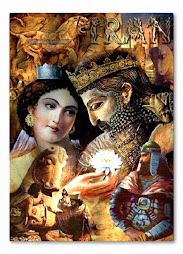

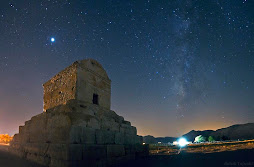

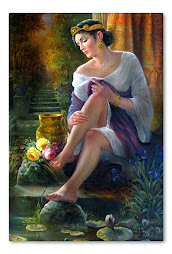
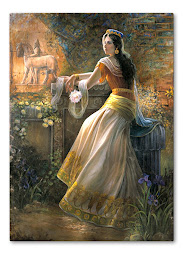
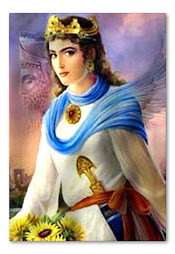



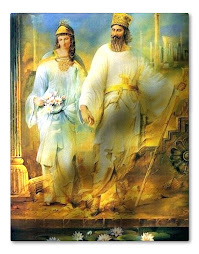

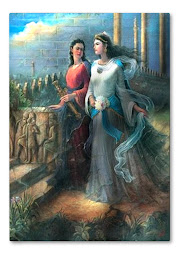
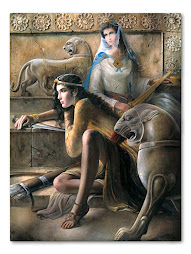
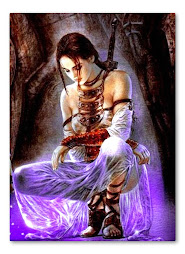

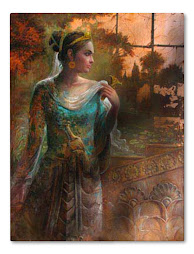
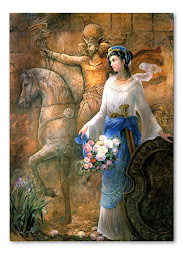
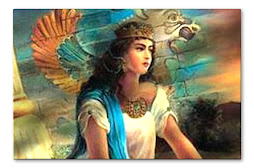

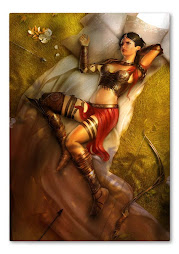
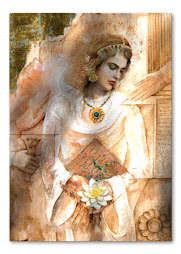

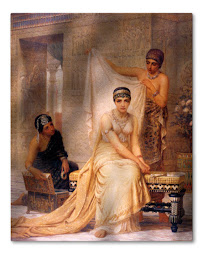
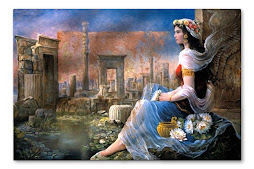

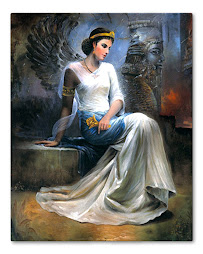
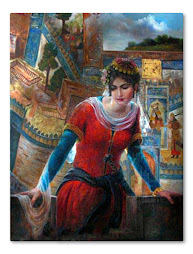
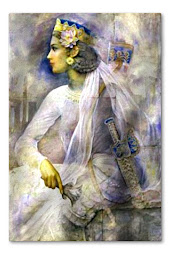
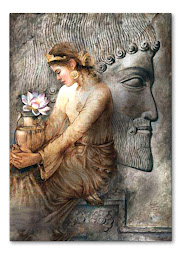
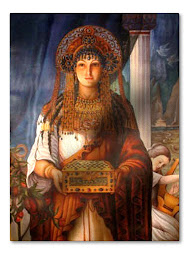
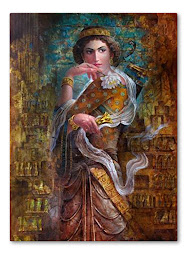
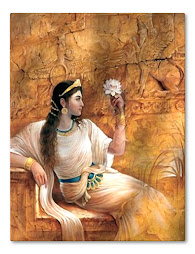
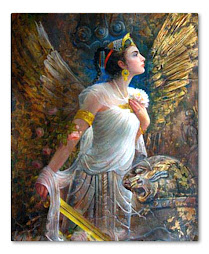
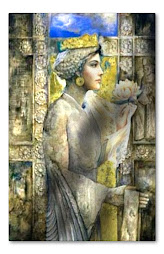



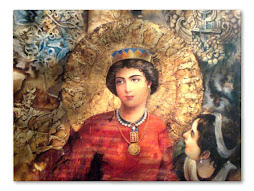



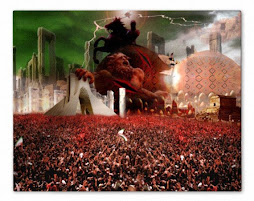
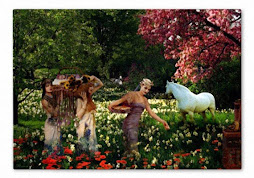

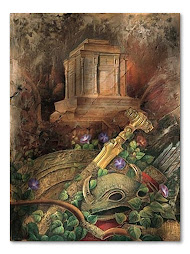

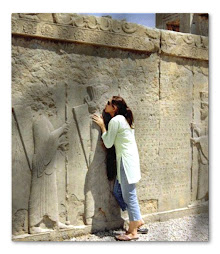
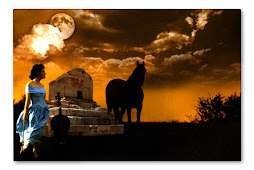

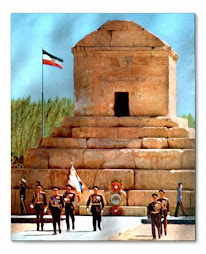
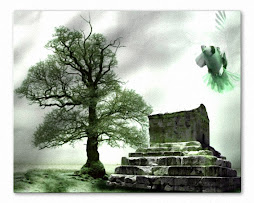
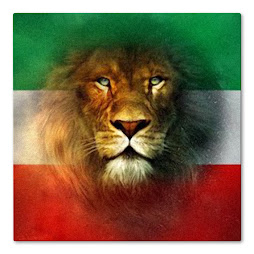
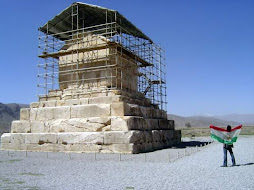























.jpg)
